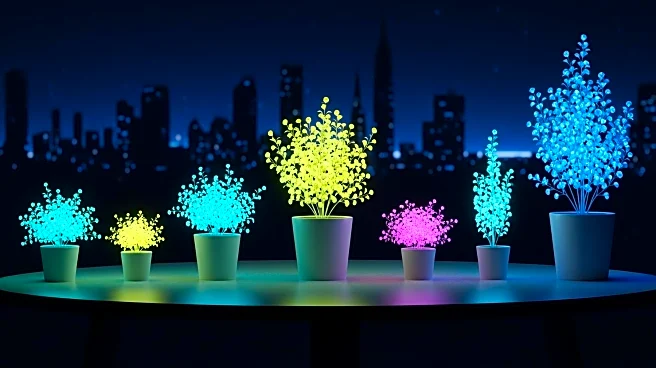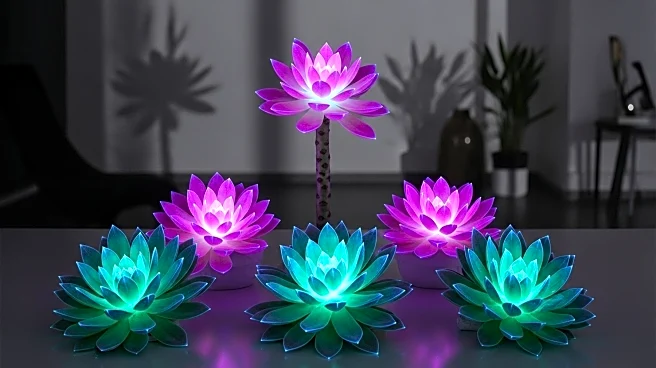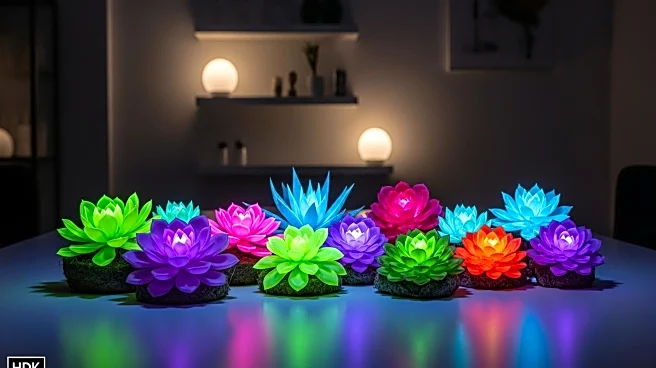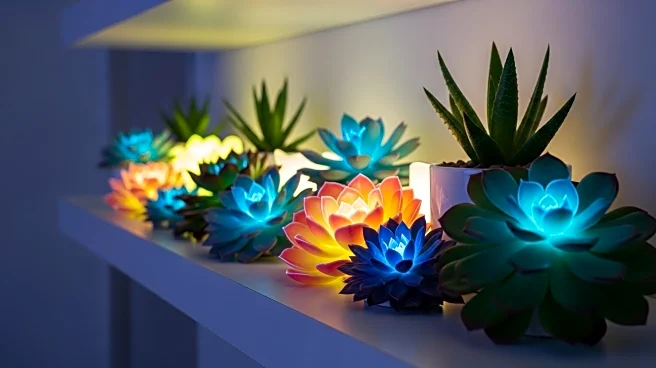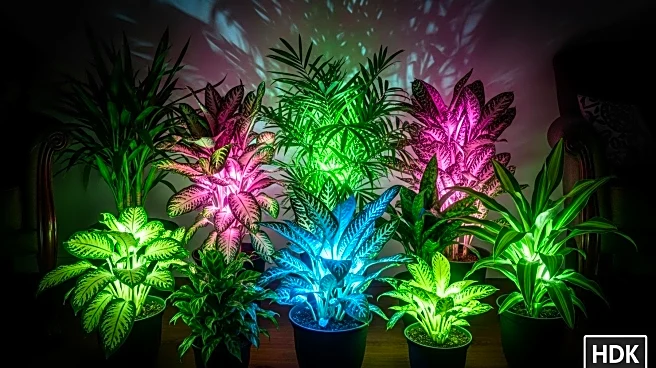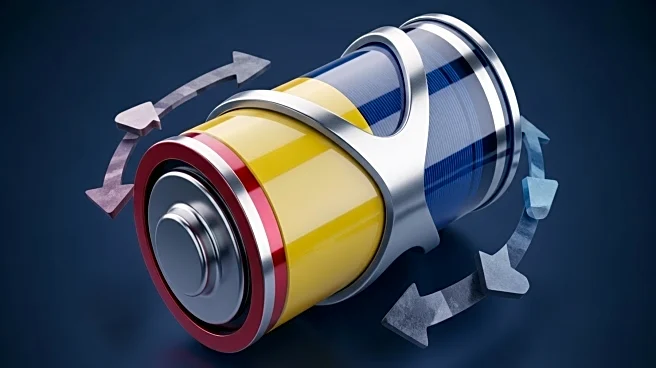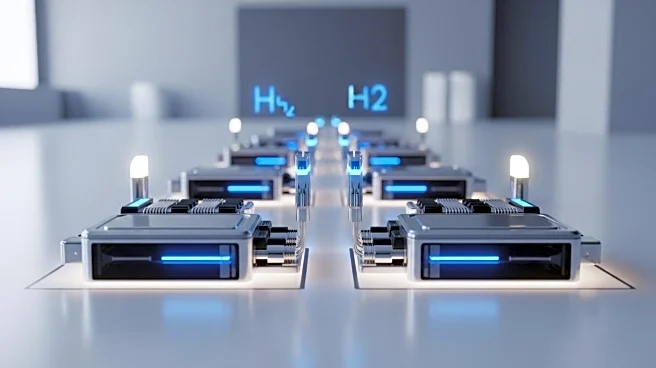What's Happening?
Researchers have developed glowing succulents that can recharge in sunlight and emit colorful afterglows, potentially replacing street lamps in urban areas. By injecting leaves with light-storing particles, these plants can radiate light bright enough to illuminate small spaces. The study, published in the journal Matter, highlights the use of inorganic afterglow particles, which are inexpensive and efficient in storing light energy. This approach bypasses the challenges of genetic engineering, offering a scalable and reproducible method for creating luminescent plants.
Why It's Important?
The development of glowing plants represents a significant step towards sustainable urban lighting solutions. By utilizing natural bioluminescence, cities can reduce reliance on traditional street lamps, lowering energy consumption and environmental impact. This innovation also opens up possibilities for eco-friendly lighting in gardens, pathways, and interior design, contributing to sustainable architecture and urban planning. The ability to create plants that glow in various colors further enhances their decorative and functional applications.
